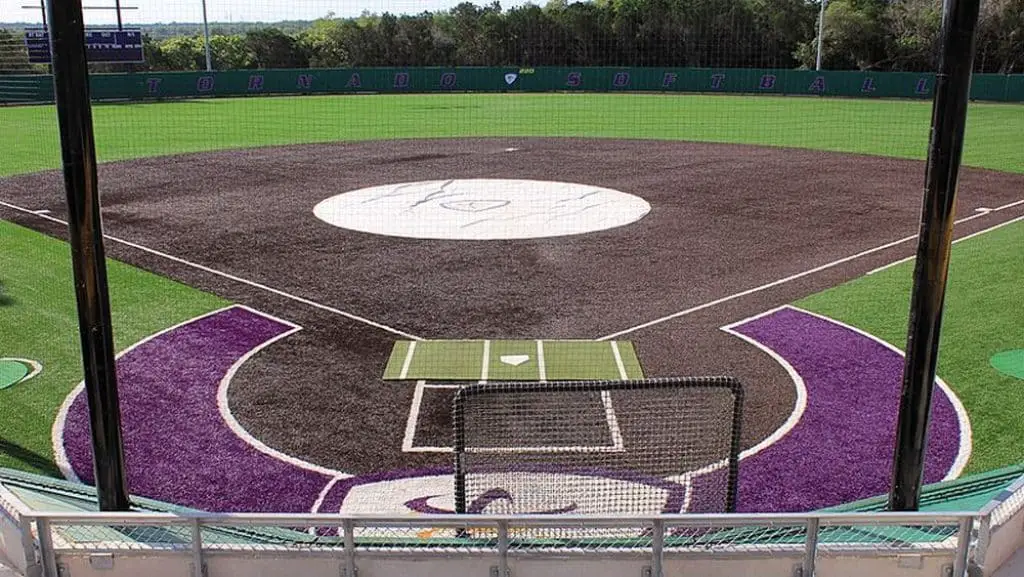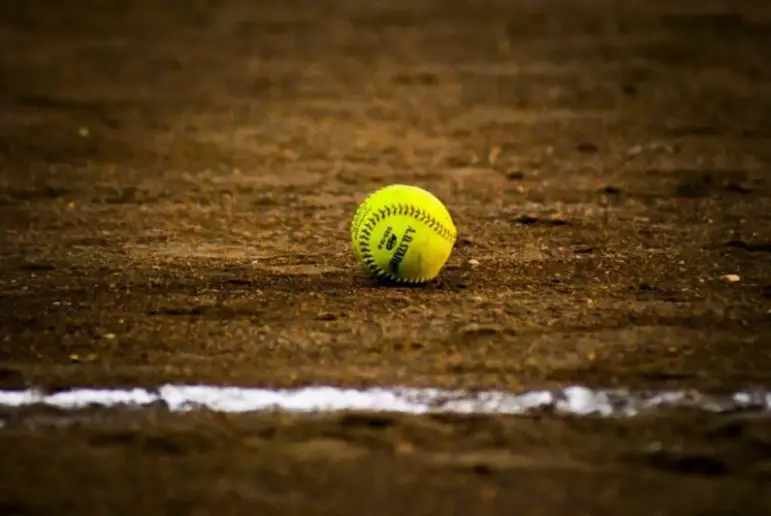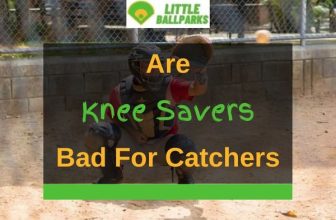Why are Softball Fields Dirt? (4 Reasons!)
Softball and baseball, while being somewhat similar, still have plenty of significant differences.
Pitching is different, players don’t use the same balls and bats, and there’s some distinction when it comes to the rules of the game.
However, the most glaring difference between softball and baseball is the one you notice the moment you step onto the field.
Besides being smaller than in baseball, the softball infield is made of dirt, not grass.
There are several reasons that answer the question of why are softball fields dirt and they mostly have to do with differences in gameplay and equipment between the two sports.
Bigger balls, decreased hit velocity, and smaller field dimensions are all factors that make the dirt more suitable for playing softball than grass.
The dirt on the field is an important feature of the game and provides smoother and more exciting gameplay.
I’ll explain it in more detail below, so let’s dive in!
Table of Contents
Why are Softball Fields Dirt?

Fair territory in softball consists of the infield, made of dirt (skinned), and the outfield which is usually grass, at least in the league competitions.
However, as anyone who has ever seen a softball game knows, most of the action takes place in the infield.
Even players who play outfield positions spend a fair share of their time in the infield.
So, it’s easy to understand how influential the dirt is to the whole game. There are a couple of reasons for this and I’ll list and explain them below.
Shorter Distance Between the Bases
Historically, softball came to be as an indoor version of baseball, so the lack of space forced the first softball enthusiast to create a smaller field.
So unlike baseball fields where the bases are 90 feet from each other, in softball, this distance is only 60 feet.
In addition, the pitching rubber is 43 feet from the home plate, compared to baseball where pitchers throw from more than 60 feet away.
The smaller infield area means that there’s a lot of action going on in a relatively small space.
Players have to move from side to side, run and backpedal, often changing their direction in a second.
The dirt field provides more traction and firm footing helping players stay on their feet when making these sudden movements.
It prevents slipping and consequently, makes the game safer reducing the risk of ankle and joint injuries.
The Ball is Slower off the Bat
While softball players can hit some real rockets, the velocity of the ball coming off the bat is still way slower than in baseball.
The softball pitch rarely exceeds 70 miles per hour, while baseball players can throw balls that fly up to 100 mph.
This also influences the velocity at which the ball comes off the bat.
The grass field is known to slow the balls down. As softballs already have less velocity off the bat, the grass would slow them down even further.
This means that if softball was played on the grass infield, all we would see during the game are bunts.
The dirt infield helps the ground ball will go faster and have a greater chance of reaching the outfield.
This keeps up the rhythm of the game, helps the play move on, and makes softball more exciting and interesting for both players and fans.
Larger Balls Increase the Slowing Effect of Grass
Softball is played with balls that are significantly larger and heavier than in baseball.
The standard baseball has 9 inches circumference.
The ball used in fastpitch softball is 11 inches in circumference and slowpitch balls are even bigger with 12 inches.
Plus, softballs are 1-2 ounces heavier than baseballs.
With more weight and larger circumference, the ball speed will be more influenced by the surface of the field.
Against the grass, the softball will produce more friction, making it move slower.
On the other hand, on a dirt surface, there’s less contact with the ball itself and it will go faster.
As I already explained, this speeds up the gameplay, makes the game more fun and interesting, and reduces the injury risk.
Easier and Cheaper Maintenance
Let’s face it, there’s a lot less money going around in softball than there is in baseball.
Amateur softball teams and leagues often struggle to make the ends meet and every way in which they can save money is welcomed.
The good condition of the field not only makes the ball go faster but makes the game safer for everyone involved.
So teams always strive to have their field in perfect condition for the game.
However, the grass is very difficult and often expensive to maintain. This is especially true for the infield which sees the most foot traffic.
It may begin to deteriorate after just a couple of games and will often require an expensive overhaul in the offseason.
The dirt maintenance is way simpler and requires significantly smaller investment, which is always helpful.
It’s easier to prepare, fix, and keep in a good condition over the season.
What Kind of Dirt is on a Softball Field?

We call the softball infield surface dirt, but it’s actually a mix of three ingredients: sand, silt, and clay.
Also, the infield skin preparation includes water, conditioners, and additives.
Clay provides strength to the surface and holds moisture. Silt and sand serve to soften the clay and allow moisture to flow in and out.
The base layer of the infield surface is usually 10-15 cm thick. It’s mostly made of sand, with this material making for 60-80 percent of the mix.
Clay accounts for 10-20 percent, and the rest is silt. The top layer is made of loose conditioning material.
It’s about a centimeter thick and allows players to move freely without dirt getting stuck to the cleats.
This layer also improves water drainage and protects the underlying soil mixture.
Conclusion
As you can see the answer, to the question of why are softball fields dirt has some perfectly logical reasoning behind it.
Without dirt in the infield, softball would likely be a completely different game.
One of the reasons for softball’s popularity is the pace of play and the fact that there’s a lot of action during the game.
The dirt surface plays a key role in this.
Even if you may not be aware of it, the dirt keeps the play going and provides a better and more exciting experience for fans.
In addition, it helps the players on the field stay safe and avoid injuries.




